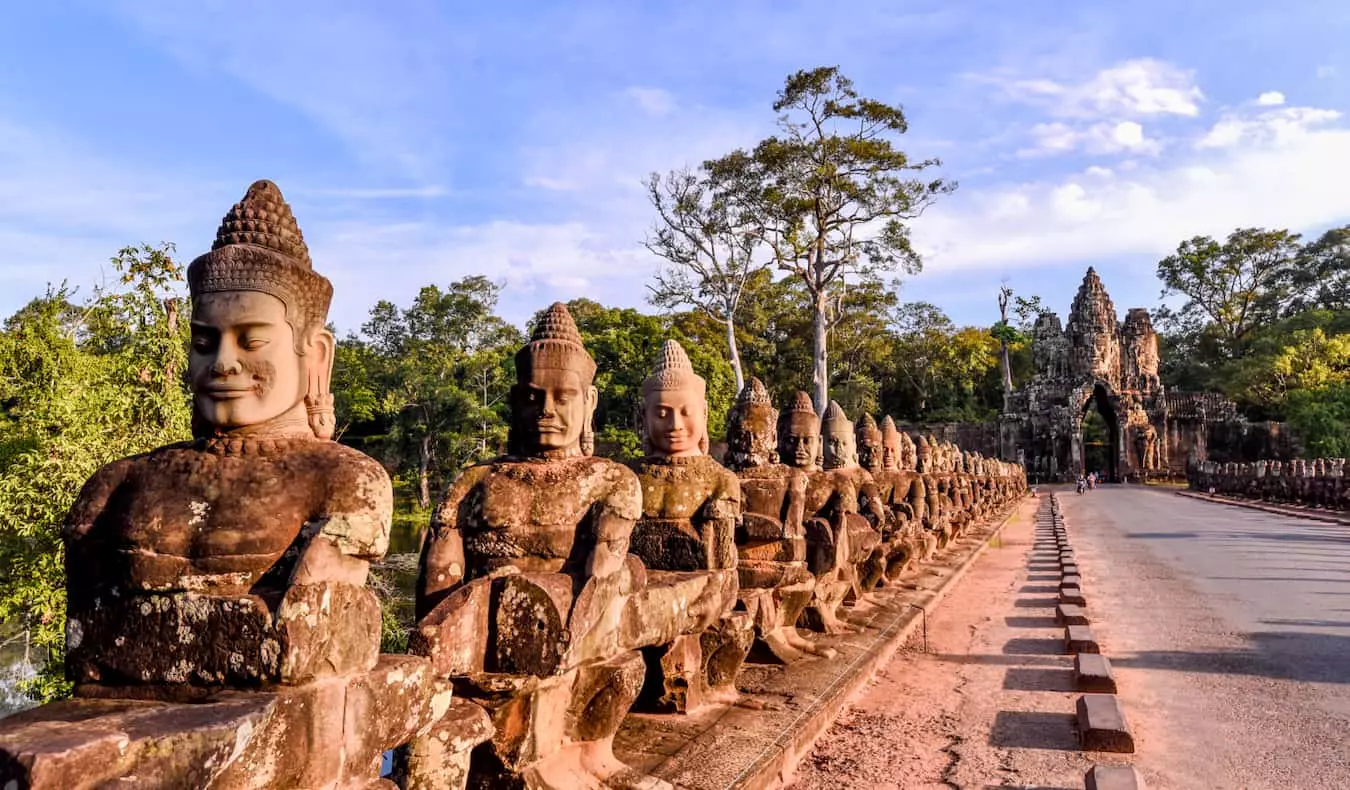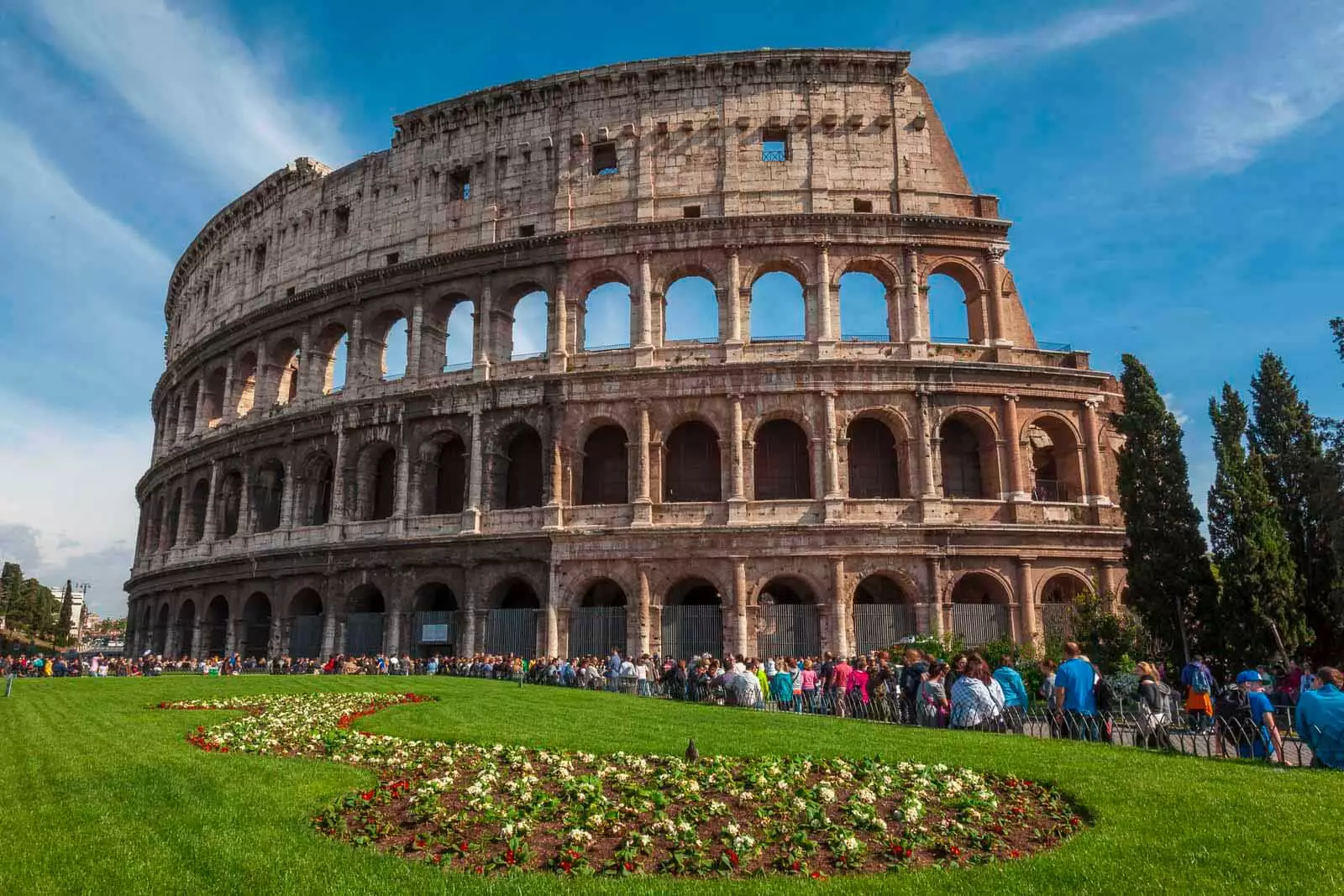Embarking on a journey to explore must-visit historical landmarks and architectural wonders is like stepping into a time machine that transports me to different eras and civilizations. From the grandeur of the Taj Mahal to the mysterious allure of the Pyramids of Giza, these extraordinary structures hold stories of the past. As I walk in their footsteps, I feel a deep connection to history and marvel at the architectural genius of our ancestors. Let’s delve into the fascinating world of these iconic landmarks and experience the magic they hold.
Content

The Great Wall of China
As an avid traveler and history enthusiast, I had the incredible opportunity to visit the Great Wall of China. Let me take you on a journey through this iconic historical landmark, sharing its fascinating history, remarkable construction, and practical tips for exploring this architectural wonder.
1.Historical Background and Construction Details
The Great Wall of China holds a captivating history that dates back over 2,000 years. It was originally built to protect China from invasions and spans approximately 13,000 miles. The wall’s construction began during the Qin Dynasty in the 3rd century BC and continued throughout various dynasties.
2.Notable Sections and Their Significance
Badaling Section:
- Renowned for its well-preserved condition and accessibility.
- Offers panoramic views and serves as a popular tourist destination.
Mutianyu Section:
- Known for its stunning natural scenery and the famous “Heavenly Ladder.”
- Features watchtowers and is less crowded than other sections.
3.Tips for Visiting and Exploring the Great Wall
Plan Your Visit:
- Start your day early to avoid crowds and witness breathtaking sunrises.
- Check the weather forecast and dress accordingly for the terrain and conditions.
Choose the Right Section:
- Consider your fitness level and preferences when selecting a section to explore.
- Some sections are more challenging, while others are more suitable for leisurely walks.
Guided Tours and Local Insights:
- Engage a knowledgeable local guide who can provide historical context and interesting stories.
- Guides can lead you to lesser-known sections and help navigate the vast wall.
Carry Essential Supplies:
- Wear comfortable shoes suitable for walking and hiking.
- Bring sunscreen, a hat, and a refillable water bottle to stay hydrated.
Respect and Preserve:
- Follow designated paths and refrain from climbing on fragile sections.
- Help preserve the wall’s integrity by refraining from removing any artifacts or graffiti.
Also Read: Reasons to Visit Jordan: Exploring a Land of Adventure and Culture
The Taj Mahal
During my travels, I had the privilege of visiting the Taj Mahal, a majestic architectural masterpiece in India. Let me transport you to this enchanting wonder as I share its historical background, architectural marvels, and practical tips for experiencing the breathtaking beauty of this iconic landmark.

1.Historical Background and Creation of the Taj Mahal
The Taj Mahal, located in Agra, was commissioned by the Mughal emperor Shah Jahan in the 17th century. It was built as a mausoleum to honor his beloved wife, Mumtaz Mahal. The construction of this opulent monument took over 20 years to complete, with the efforts of skilled artisans, architects, and laborers.
2.Architectural Features and Cultural Significance
Architectural Splendor:
- The Taj Mahal is a stunning example of Mughal architecture, combining Persian, Islamic, and Indian influences.
- Its white marble facade adorned with intricate carvings and precious gem inlays captivates visitors with its exquisite craftsmanship.
Symbol of Love and Romance:
- The Taj Mahal is a symbol of eternal love, as it was built as a tribute to Emperor Shah Jahan’s beloved wife.
- Its symmetrical design, perfectly reflecting in the surrounding pools, enhances its romantic aura.
3.Tips for Visiting and Appreciating the Beauty of the Taj Mahal
Early Morning or Late Evening Visits:
- Plan your visit during the early morning or late evening to witness the Taj Mahal’s ethereal beauty at sunrise or under the moonlight.
- The soft golden hues during these times create a magical atmosphere.
Entry and Security:
- Carry a valid ID for ticket purchase and security checks.
- Be prepared for security measures, such as bag inspections, to ensure the preservation of this iconic site.
Explore the Gardens and Viewpoints:
- Take leisurely strolls through the lush gardens surrounding the Taj Mahal.
- Capture stunning photos and enjoy panoramic views from viewpoints across the Yamuna River.
Inside the Taj Mahal:
- Experience the serenity inside the mausoleum, where the tombs of Emperor Shah Jahan and Mumtaz Mahal rest.
- Admire the intricate marble work, delicate carvings, and the play of light filtering through the ornate lattice screens.
The Pyramids of Giza
Having always been fascinated by ancient civilizations, visiting the Pyramids of Giza was a dream come true for me. Let me transport you to the land of pharaohs as I share the intriguing history, remarkable architectural design, and tips for exploring these iconic structures.
1.Brief History and Purpose of the Pyramids
The Pyramids of Giza, located on the outskirts of Cairo, Egypt, were constructed over 4,500 years ago. These monumental structures were built as tombs for the pharaohs, serving as their final resting places and symbols of their eternal power and divine status.
2.Architectural Design and Construction Techniques
Pyramid Structures:
- The Great Pyramid of Khufu is the largest and most famous among the three main pyramids at Giza.
- These pyramids were meticulously designed with precise mathematical calculations and alignment with celestial bodies.
Construction Techniques:
- Ancient Egyptians employed advanced engineering techniques, including quarrying, shaping, and lifting massive stones.
- The precise fitting of stones without mortar is a testament to their architectural brilliance.
3.Touring the Pyramids and Nearby Attractions
Exploring the Pyramids:
- Inside the pyramids, you’ll witness intricate passageways, chambers, and the burial chambers of the pharaohs.
- Be prepared for narrow and steep passages, as well as low ceilings, which require a sense of adventure and physical agility.
The Great Sphinx:
- Adjacent to the pyramids stands the Great Sphinx, a colossal statue with the body of a lion and the head of a pharaoh.
- Marvel at the craftsmanship and mystery surrounding this iconic monument.
Pyramid Complexes:
- Explore the surrounding pyramid complexes, including the Valley Temple and the Solar Boat Museum.
- These sites provide valuable insights into the funerary rituals and daily life of ancient Egyptians.
Desert Safari:
- Take a desert safari on camelback or enjoy a panoramic view of the pyramids from a vantage point in the desert.
- Embrace the magical ambiance of the desert as you immerse yourself in the timeless beauty of Giza.
The Acropolis of Athens
As an avid traveler, I had the opportunity to explore the remarkable Acropolis of Athens, a site steeped in history and cultural significance. Join me on a journey to ancient Greece as I share the historical context, architectural highlights, and tips for exploring this iconic landmark.
1.Historical Context and Cultural Importance of the Acropolis
The Acropolis, situated on a rocky outcrop overlooking Athens, holds great historical and cultural significance. It served as the heart of the city-state of Athens and was a symbol of Athenian power, democracy, and artistic achievement during the Golden Age of Greece.
2.Architectural Highlights, including the Parthenon
The Parthenon:
- The Parthenon, dedicated to the goddess Athena, stands as the most renowned structure on the Acropolis.
- This majestic temple exemplifies the Doric order of architecture and showcases the refined craftsmanship of ancient Greek artisans.
Erechtheion:
- The Erechtheion, an intricately designed temple, features the iconic Porch of the Caryatids with its six female statues.
- Its unique Ionic architectural style and mythical associations make it a captivating sight.
3.Exploring the Acropolis Museum and Surrounding Attractions
The Acropolis Museum:
- Immerse yourself in the rich history of the Acropolis by visiting the Acropolis Museum located nearby.
- The museum houses a vast collection of archaeological artifacts, including sculptures and friezes from the Parthenon.
Theater of Dionysus:
- Descend from the Acropolis to the Theater of Dionysus, the birthplace of Greek tragedy and comedy.
- Imagine the ancient Greeks gathering here to witness the dramatic performances that shaped Western theater.
Areopagus Hill:
- Climb Areopagus Hill, located to the northwest of the Acropolis, for panoramic views of Athens and the surrounding landscape.
- This site holds historical significance as it served as a meeting place and the site of trials in ancient Athens.
Odeon of Herodes Atticus:
- Admire the well-preserved Odeon of Herodes Atticus, an ancient amphitheater located at the foot of the Acropolis.
- Today, it hosts concerts and performances, continuing the legacy of artistic expression in this historic setting.
The Acropolis of Athens stands as a testament to the brilliance of ancient Greek civilization. Exploring its majestic structures and immersing oneself in the rich history and cultural significance is a truly awe-inspiring experience. Prepare to be captivated by the architectural splendor and the enduring legacy of the Athenian civilization.

Conclusion
In the enchanting realm of must-visit historical landmarks and architectural wonders, I’ve uncovered a tapestry of human achievement and cultural heritage. From the Great Wall of China, standing as a testament to human ingenuity, to the timeless beauty of the Taj Mahal, each site carries a unique story waiting to be explored. As I bid farewell to these awe-inspiring treasures, I carry with me a deeper appreciation for our collective history and the remarkable feats of human creativity. These landmarks serve as bridges between the past and the present, inviting us to learn, reflect, and be inspired by the enduring legacies they represent.
FAQs
How can I ensure a smooth visit to historical landmarks and architectural wonders?
Plan your visit in advance, checking for opening hours, ticket availability, and any necessary reservations. Research the landmarks’ guidelines and restrictions, such as dress codes or photography policies. Consider hiring a local guide to enhance your experience and provide insightful information.
Are these landmarks accessible for individuals with mobility challenges?
Many historical landmarks have made efforts to improve accessibility, including ramps, elevators, and designated pathways. Check the specific landmark’s website or contact their visitor center to inquire about accessibility options and accommodations.
What are some tips for capturing memorable photographs at these landmarks?
Be mindful of any photography restrictions and respect the site’s guidelines.
Experiment with different angles and perspectives to create unique shots. Visit during the golden hours of sunrise or sunset for beautiful lighting. Avoid heavy crowds by arriving early or staying late, allowing for more opportunities to capture stunning images.
How can I engage my children and make the visit enjoyable for them?
Research child-friendly activities and interactive exhibits at the landmarks. Share interesting stories and historical facts in a fun and engaging manner. Encourage them to participate in educational programs or scavenger hunts tailored for younger visitors.
Are there any safety considerations when visiting historical landmarks?
Stay hydrated and wear comfortable shoes, as you may need to walk or climb stairs.
Follow all safety instructions and signs provided by the landmark’s management.
Be cautious of uneven surfaces, low ceilings, or narrow passages in older structures.
Keep an eye on your personal belongings and be aware of your surroundings, especially in crowded areas.

My name is Amanda. I am a travel blogger from the United States who loves to explore and write about my adventures! I have been fortunate enough to travel all over the world, and have seen so much of this beautiful planet that we live on. From hiking through a rainforest in Costa Rica or exploring a new city during one of my many trips abroad, there’s nothing quite like seeing new places for the first time. I love writing about what it’s like to be a woman traveling alone, as well as sharing stories from other female travelers around the world.












